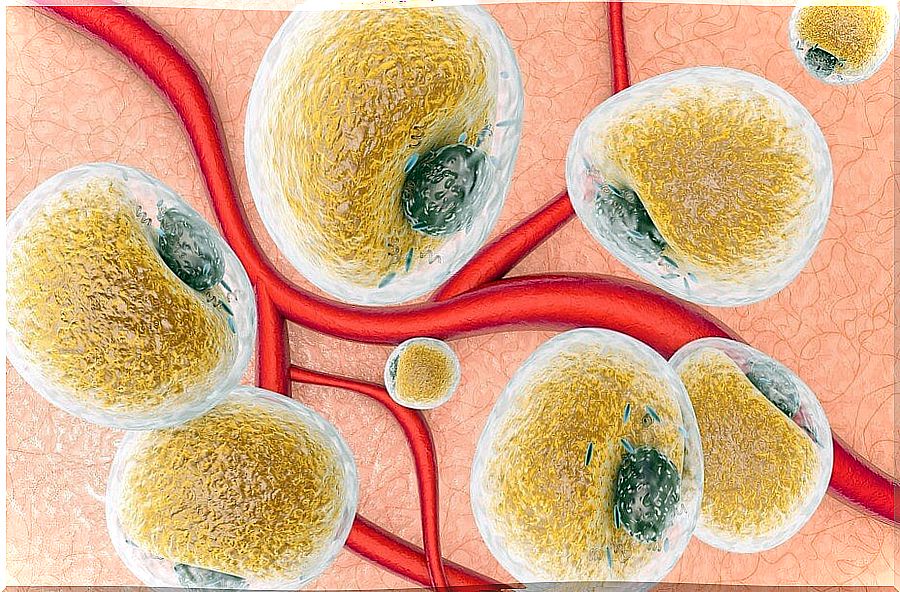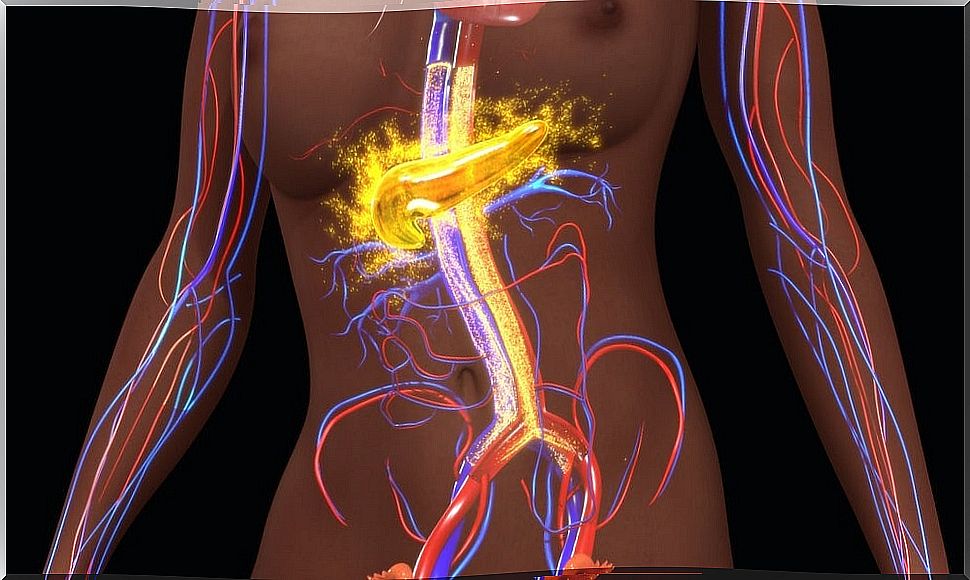Adiponectin: What It Is And How It Works
Adiponectin is a hormone synthesized mainly by adipocytes, with antidiabetic, anti-inflammatory and cardioprotective functions.

Adiponectin is a hormone mainly synthesized in fatty tissue. However, other cell types can also produce it. And what does it do? Well, this hormone is involved in the metabolism of lipids and carbohydrates. In addition, it has an anti-inflammatory and cardioprotective function.
According to a recent study, “adiponectin is the most abundant peptide secreted by adipocytes, the reduction of which plays a key role in obesity-related diseases such as insulin resistance / type 2 diabetes and cardiovascular disease” .
If you want to know more about this hormone, be sure to read everything that we are going to tell you below.
Adipose tissue

Adipose tissue, or fatty tissue, is the main lipid store. These are stored primarily in the form of triglycerides.
There are also two types of adipose tissue :
- Brown or brown adipose tissue ( brown fat). This is present in all species of mammals. It is essential for thermogenesis, that is, the production of heat. This type of fat is particularly abundant in hibernating animal species.
- White adipose tissue or white fat. Until a few years ago it was believed that it was a mere energy store. However, the functions they are responsible for are becoming more and more known. In addition, it plays an important role in energy metabolism. It also intervenes in the feelings of hunger and satiety.
Biochemistry of adiponectin
Adiponectin is a 30 kDa molecule. Its structure is similar to tumor necrosis factor alpha.
As for its circulation in plasma, this can be carried out in two ways. For one, you can make it in the form of a dimer (two units similar to a clothespin). On the other hand, it can circulate in the form of a high molecular weight complex.
The normal plasma concentration of adiponectin is between 5 and 10 picograms / ml. Also, these blood levels of adiponectin are inversely related to BMI.
There are two types of receptors for adiponectin. The first, AdipoR1, is ubiquitously distributed and found primarily in skeletal muscle. The other, called AdipoR2, is preferentially located in the liver.
Insulin sensitivity

Adiponectin acts both directly and indirectly in the metabolism of insulin. Thus, on the one hand, it affects the metabolism of fatty acids. These in turn are linked to insulin. On the other, it drives its own cascade of intracellular reactions. These are associated with the activation of insulin receptors.
Insulin sensitivity refers to the ability of tissues to take up insulin. This is reduced when plasma triglyceride levels are high. Therefore, the ability of muscle tissue to take advantage of glucose and obtain energy is decreased.
However, adiponectin works by increasing the use of fatty acids in muscle fibers. In this way, it favors its uptake and oxidation to obtain energy.
As they are used as a source of energy, the triglycerides accumulated in the muscle fibers decrease. Thus, the expression of molecules capable of capturing insulin is favored.
Adiponectin also has a direct role on insulin. Thus, it enhances the activity of its receptor. And not only that, it also drives the intracellular pathway associated with it. This is done through a process called phosphorylation .
Effects of adiponectin on blood vessels

Adiponectin works as an anti-inflammatory and protective in the cardiovascular system. First, it slows down the inflammatory response that occurs in blood vessels when they are mechanically damaged. In addition, it intervenes in the steps necessary for the formation of an atheroma plaque. On the other hand, it performs the following functions:
- Inhibits the expression of adhesion molecules.
- It prevents the adhesion and activation of monocytes.
- Prevents the formation of foam cells. These are the key cells in the atheroma plaque.
- It blocks the migration of smooth muscle fibers into the vessels.
Finally, high levels of adiponectin are associated with a lower risk of suffering a myocardial infarction. It is likely due to its protective effect on the coronary arteries.









